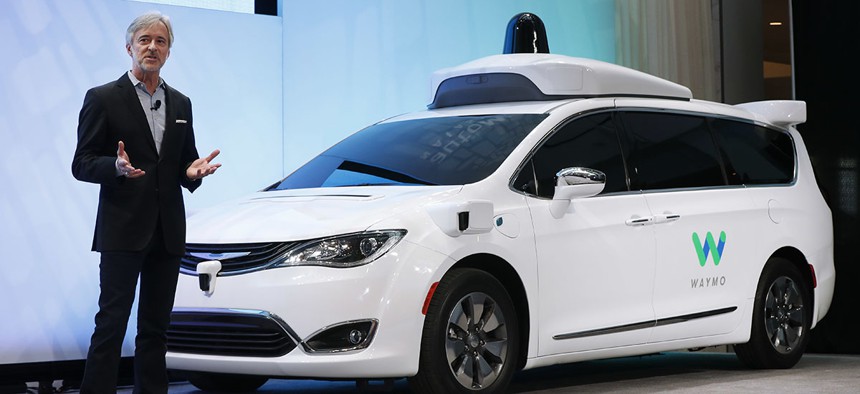These Driverless Cars Won't Rely on You in An Emergency

John Krafcik, CEO of Waymo, the autonomous vehicle company created by Google's parent company, Alphabet, introduces a Chrysler Pacifica hybrid outfitted with Waymo's own suite of sensors and radar. Paul Sancya/AP File Photo
Taking the wheel won't be an option.
Waymo has been testing autonomous vehicles with human passengers for the last several years, but the company recently decided to make one important change.
The company, a subsidiary of Google, told Reuters they stopped developing "hand-off" features that made drivers take control in dangerous situations, which many other autonomous vehicles feature. Why? John Krafcik, the head of Waymo, said it was because passengers became oblivious to their surroundings.
» Get the best federal technology news and ideas delivered right to your inbox. Sign up here.
Through its testing, Waymo discovered people in these vehicles tended to completely give control to the car and instead look at their phones, put on cosmetics or take naps. They became wholly unprepared to take the wheel and weren't even aware of how fast the car was going.
The passenger won't be completely cut off, however. Waymo is coming out with vehicle models that boast display screens on the back of the front seats that provide passengers with updated information about the vehicle's behaviors and methods.
The company is also including a panel with buttons next to the screen will let people start the ride, pull the car over, unlock the doors and if necessary call for help.
Waymo's vans are currently driving around Phoenix, Arizona.



